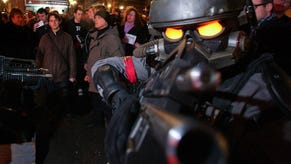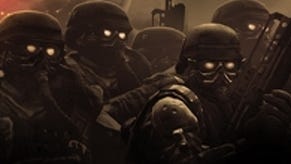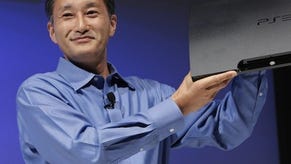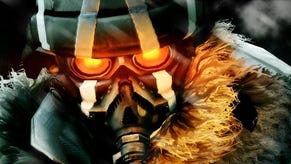Killzone 2
Welcome to Helghan.
There are no rocket-powered leaps here, but pressing the jump button next to an obstacle of scaleable height allows you to vault over it. Although you don't see your hands actually propelling you over, it feels a lot like Mirror's Edge in terms of physical heft and momentum. You also have limited interactions with scenery objects like switches, valves and explosive charges. The latter two make use of the Sixaxis motion sensor to turn and lock them into place, while the steadiness of your hand on the controller determines how stable your sniper shots will be.
Enemy AI, one of the sore points in the first game, seems convincingly tough, even at normal difficulty. They'll use cover as effectively as you do, try to flank your position, flush you out with grenades and even duck, roll and shuffle to safety if they're caught in the open. If a Helghast trooper is making a break for different cover, and you start firing in front of them, they'll stop and try to head back the way they came. A small touch, perhaps, but indicative of the intelligence you're up against. Their lifelike responses are made more convincing thanks to some excellent animation, which holds fairly steady across all the character models and environments. When a fellow member of Alpha Squad busts a door down with his shoulder, there's genuine weight and momentum to the action. Flags and tarpaulins flutter angrily in the constantly raging Helghan storms, while swirls of dust and billows of smoke display particle effects that manage to be impressive without feeling distractingly showy.
After Corinth River, the game evolves its storyline alongside the journey of the ISA convoy into enemy territory. Blood Meridian brings you up against the Helghast's most terrible technology: Arc Towers. These use an electrically charged metallic element to deliver lightning strikes with surgical precision. Needless to say, you're the one sent to bring it down. From there, you encounter a ferocious siege stand-off in Visari Square, get separated from your unit in the Salamum District, and finally find a way to get the ISA spearhead across the Salamun Bridge and into the capital palace where Scolar Visari, the despotic Helghast leader, hopefully awaits his fate.
It doesn't work out like that, of course, but to say any more would be unfair at this point. Thankfully, just as the game is starting to feel more than a little samey, after five levels of painstaking progress through the grey and black shanty town streets of Pyrrhus, it opens out after the sixth level and even takes a sharp narrative left turn. The environments change from claustrophobic streets to a more open-plan layouts, and the colour palette starts to evolve beyond the deliberately oppressive murk that has surrounded you so far. You also, finally, get to play with some of the vehicles.
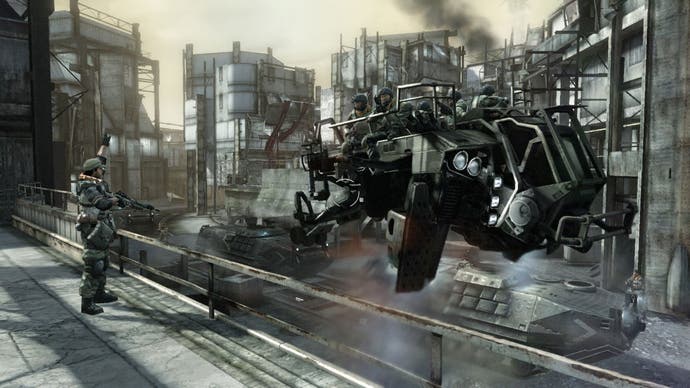
Prior to launch, Kristan said of the original that it was "not an everyman game" and it quickly becomes apparent that the same holds true for this belated follow-up. This is a deliberately paced tactical game, where death is a constant threat and basic knowledge of workable military tactics will serve you well. It's brutal, sometimes fussily so, and many will find its unforgiving nature a turn-off. Plenty more, however, should relish a high-profile game with a truly hardcore style, especially with production values as polished as this.
There's much more to be said, of course, but you'll have to wait until next month to see if the whole game can deliver on its early promise.
Killzone 2 is due out exclusively for PS3 in February. We'll have our review up in a few short weeks.


